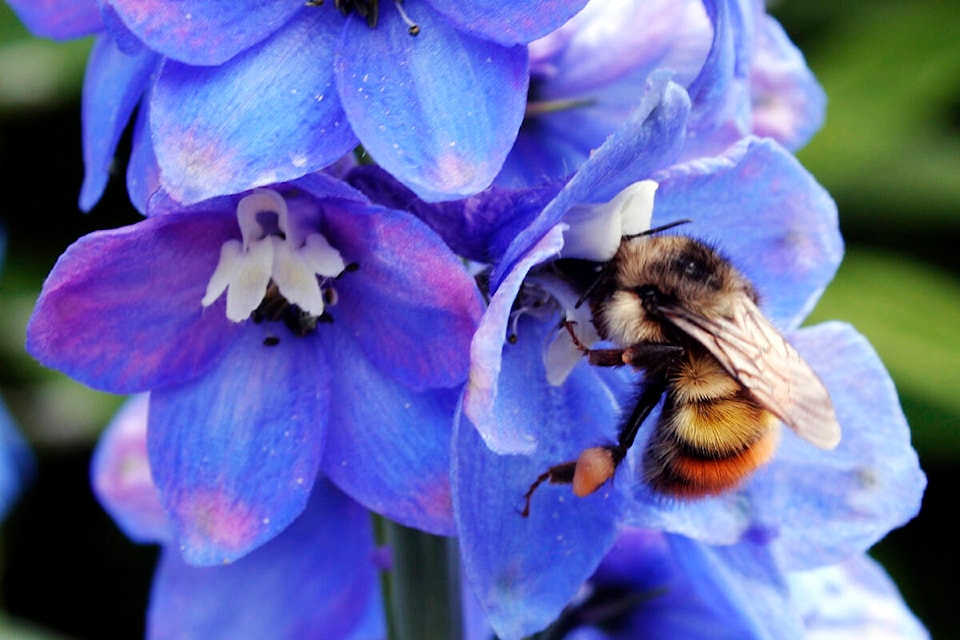By Leslie Cox
Special to the Record
Spotted my first bumble bee the other day in our neighbour’s crocus patch. I was alerted there was something going on in the floral cup by its gently swaying movements in the absence of wind.
Sure enough. It was a bumble bee queen recently emerged from her winter hibernation, gorging on nectar to restore her energy reserves. Once her appetite is sated, the queen will search for a suitable nesting site. Usually, she prefers someplace underground like an abandoned mouse or vole hole, under a shed or in a woodpile.
Once the nest is lined with grass, she sets about making brood cells and a wax honey pot for storing the pollen and nectar she will collect to feed the first batch of young.
The queen sits on her first set of eggs to keep them warm for the few days it takes the grub-like larvae to emerge. They are fed the stored nectar and pollen, as well as fresh supplies the queen forages and brings back to the nest.
The larvae develop amazingly fast, spinning their pupating cocoons within one to two weeks of hatching. A mere 10 days after settling into their cocoons, they emerge as fully developed adults… albeit infertile females. These are the worker bees. They immediately set to work relieving the queen from all duties of building brood cells and food gathering.
Relieved of her extra duties, the queen has seen the last of the outside world and settles down to do the job she was born to do: lay eggs. All of theses newborn larvae are also worker bees but as summer nears its end, the queen starts laying eggs that will produce fertile males and females.
After pupating, these fertile offspring leave the nest and mate. The males die shortly afterwards, their sole purpose of preserving the species having been attended to. The newly fertilized queens begin a feverish hunt for nectar to store up fat reserves before searching out a suitable hibernation hole to wait out the inhospitable winter weather.
Meanwhile, back in the home nest the old queen and her army of worker bees are slowing down. The advent of colder weather marks the end of their lifespan and they begin to die …their purpose fulfilled in one short season.
Sighting bumble bees in the garden is good news. Very good news. As one of the species that pollinate fruits, vegetables and flowers, their presence is important. Unfortunately, bumble bee populations are being threatened.
According to the Xerces Society, more than a quarter of the 46 bumble bee species found in Canada and the U.S. are at risk. And four of the 32 species found in BC are at risk. The major threats are: pests, diseases, pesticides, invasive non-native plant species, habitat alteration and destruction and climate change.
Pesticide spraying to control one specific pest, even organically, will harm other insects that are in the general vicinity. With spring being an ideal time to spray, newly forming bee colonies can be severely impacted.
Urban development is another concern as it fragments and degrades their food supply, as well as impacts on suitable nesting sites, reducing the number of bee colonies. The result is more inbreeding which decreases their genetic diversity, leading to an increased risk of losing bumble bees to lessened pest and disease resistance.
Controlling urban development is difficult given the high demand, but gardeners can offset some of the damage to bee habitat. Plant a diversified floral menu of pollen and nectar, provide water and stop using sprays. The reward will be pollinated fruits and vegetables harvestable at the end of your bumble bees’ short life.
Leslie Cox co-owns Growing Concern Cottage Garden in Black Creek. Her website is duchessofdirt.ca
